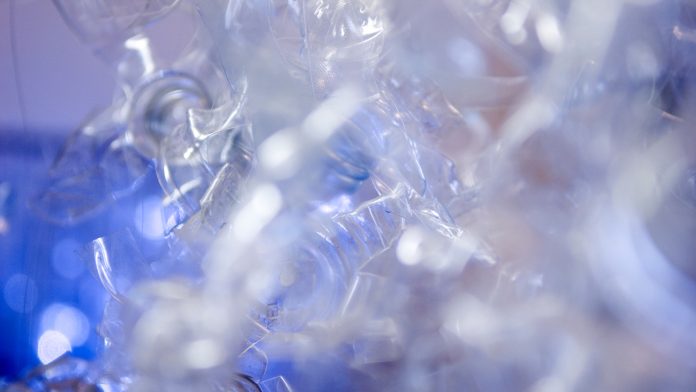Scientists have developed a way to break down biodegradable plastics in only a few weeks using just water and heat.
This technique for breaking down biodegradable plastics faster than is currently possible has been developed by the Research Triangle Park (RTP) with funding from the US Army.
The researchers believe that this advance could have applications in solving waste management challenges and offer technological advancements for the army.
The process, developed by a team of scientists at University of California, Berkeley and the University of Massachusetts Amherst, entails embedding polyester-eating enzymes in the plastic as it is made.
When exposed to water and heat, enzymes ‘shrug off’ their polymer shroud and ‘eat away’ the plastic polymer into its building blocks.
Biodegradable plastics are principally composed of a polyester known as polylactic acid – or PLA – and when this process is applied, it reduces it to a lactic acid that can feed soil microbes in compost. As well as this, the polymer wrapping degrades.
This technique, which has been outlined in the publication Nature, eradicates microplastics, a pollutant and by-product of chemical degradation processes. Up to 98% of plastics made using this method degrades into small molecules.
“These results provide a foundation for the rational design of polymeric materials that could degrade over relatively short timescales, which could provide significant advantages for Army logistics related to waste management,” said Dr Stephanie McElhinny, programme manager, Army Research Office, an element of the U.S. Army Combat Capabilities Development Command, known as DEVCOM, Army Research Laboratory. “More broadly, these results provide insight into strategies for the incorporation of active biomolecules into solid-state materials, which could have implications for a variety of future Army capabilities including sensing, decontamination, and self-healing materials.”
The team embedded an enzyme that degrades toxic organophosphate chemicals – like those in insecticides and chemical warfare agents – in a fibre mat. When the mat was mixed with the chemical, the enzyme broke down the organophosphate.
The researchers believe that protecting the enzyme from falling apart, which proteins typically do outside of their normal environment, such as a living cell, resulted in the key innovation.
The researchers have also demonstrated a similar method by covering the enzyme in engineered molecules called random heteropolymers or RHPs, and implanting billions of nanoparticles through plastic resin beads.
“This work, combined with the 2018 discovery, reveals these RHPs as highly effective enzyme stabilizers, enabling the retention of enzyme structure and activity in non-biological environments,” explained Dr Dawanne Poree, programme manager, ARO. “This research really opens the door to a new class of biotic-abiotic hybrid materials with functions only currently found in living systems.”
This technique could have many useful applications. Ting Xu, UC Berkeley professor of materials science and engineering and of chemistry, commented: “Imagine, using biodegradable glue to assemble computer circuits or even entire phones or electronics, then, when you’re done with them, dissolving the glue so that the devices fall apart and all the pieces can be reused.”
“Think of having a damaged equipment or vehicle parts that can be degraded and then re-made in the field, or even repurposed for a totally different use,” Poree added. “It also has potential impacts for expeditionary manufacturing.”









